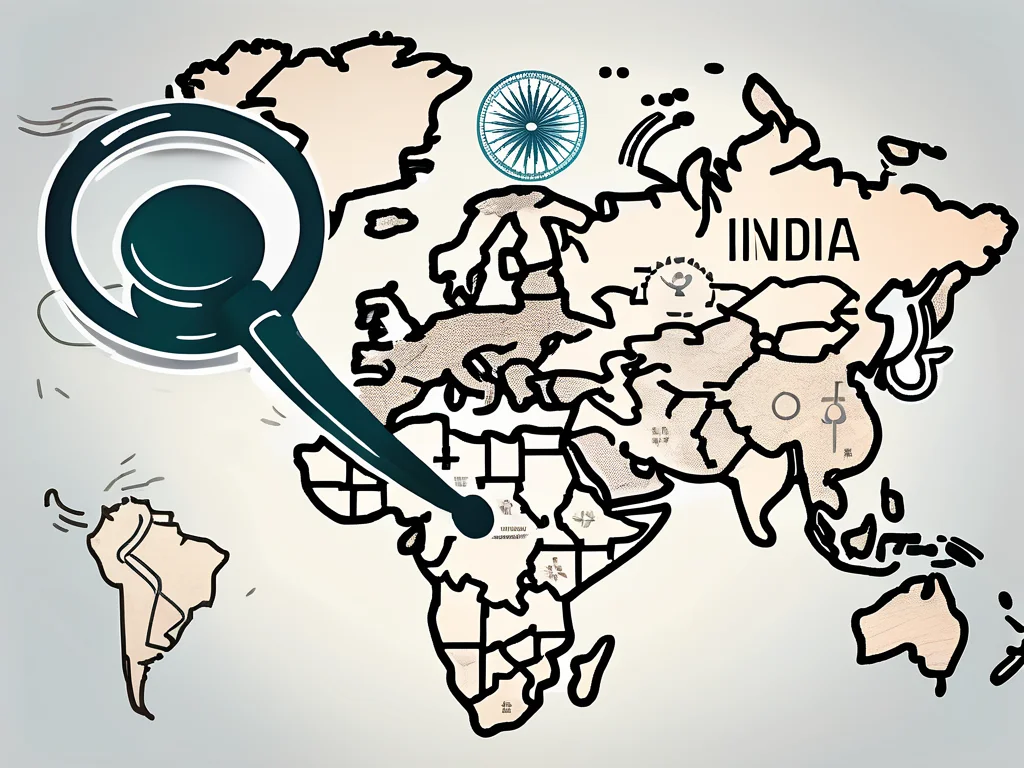India’s triumph in eradicating life-threatening diseases is a testament to strategic planning, collaborative efforts, and unwavering commitment to public health. This blog explores the key elements behind India’s successful disease eradication campaigns, including government initiatives, international partnerships, challenges faced, and lessons for sustaining progress. By examining case studies, milestones, and future strategies, we uncover how India turned health challenges into a global model for disease control. This 1500-word guide also provides actionable recommendations for preventing future outbreaks.
What Is Disease Eradication, and Why Is It Important?
Disease eradication refers to the complete and permanent reduction of a disease’s incidence to zero worldwide, eliminating the need for further control measures. In India, a nation with diverse populations and complex healthcare challenges, eradicating diseases like polio and smallpox has been a monumental achievement. These efforts have saved countless lives, reduced healthcare costs, and boosted economic growth by fostering a healthier workforce.
Eradication is critical because it:
- Eliminates the burden of preventable diseases.
- Enhances public health infrastructure.
- Promotes economic stability by reducing medical expenses and increasing productivity.
India’s journey showcases how targeted strategies and global collaboration can achieve lasting health outcomes.
The Historical Context of Disease in India
India’s battle with diseases dates back decades, with challenges like smallpox and polio straining healthcare systems. These diseases thrived in densely populated areas due to poor sanitation, limited healthcare access, and low awareness. For instance, polio once paralyzed thousands of children annually, particularly in rural and underserved regions.
Key historical factors:
- High Transmission Rates: Crowded urban centers and inadequate hygiene fueled disease spread.
- Healthcare Gaps: Limited infrastructure in rural areas hindered timely interventions.
- Cultural Barriers: Misinformation and traditional beliefs often delayed treatment or vaccination.
Understanding these patterns led to targeted interventions, setting the stage for India’s eradication success.
What Were the Key Government Initiatives for Disease Eradication?
The Indian government played a pivotal role in disease eradication through comprehensive policies and innovative programs. Recognizing the urgency of public health crises, it implemented strategies that addressed both medical and societal factors.
Major Government Initiatives
- Nationwide Vaccination Campaigns: Programs like the Pulse Polio Initiative vaccinated millions of children, targeting high-risk areas.
- Awareness Campaigns: Public education efforts promoted hygiene, vaccination, and early detection.
- Surveillance Systems: Robust monitoring tracked disease spread, enabling rapid response.
- Healthcare Infrastructure: Specialized facilities and mobile health units ensured access to diagnosis and treatment, even in remote areas.
The government also adopted technology, such as mobile health apps, to monitor cases and provide remote consultations. Training programs equipped healthcare workers with skills to handle evolving challenges, ensuring a resilient workforce.
How Did International Collaboration Aid Eradication?
Global partnerships were instrumental in India’s success. Collaborations with organizations like the World Health Organization (WHO) and UNICEF brought resources, expertise, and credibility to eradication efforts.
Benefits of International Partnerships
- Financial Support: Funding from global bodies supported vaccination drives and infrastructure development.
- Knowledge Exchange: Indian researchers worked with international experts to study disease patterns and develop solutions.
- Capacity Building: Training programs enhanced local healthcare workers’ skills, improving response capabilities.
- Holistic Approaches: Partnerships addressed social determinants like poverty and education, fostering sustainable health solutions.
These collaborations not only accelerated eradication but also strengthened India’s healthcare system, making it a model for global health security.
What Challenges Did India Face in Disease Eradication?
India’s path to eradication was fraught with obstacles, from logistical hurdles to cultural resistance. Addressing these required innovative and adaptive strategies.
Key Challenges
- Geographical Barriers: Remote areas with poor infrastructure made healthcare delivery difficult. Mobile health units and improved transportation networks helped overcome this.
- Vaccine Hesitancy: Misconceptions about vaccines led to resistance in some communities. Community engagement and awareness campaigns dispelled myths and built trust.
- Cultural Misinformation: Traditional beliefs sometimes deterred medical care. Culturally sensitive interventions encouraged acceptance of treatments.
- Healthcare Disparities: Uneven infrastructure across states posed challenges. Standardized protocols and training bridged these gaps.
By addressing these issues head-on, India demonstrated resilience and adaptability in its eradication efforts.
How Did Eradication Impact Public Health and the Economy?
The eradication of diseases like polio and smallpox transformed India’s public health landscape and economy.
Public Health Benefits
- Reduced Disease Burden: Eliminating diseases freed up healthcare resources for other priorities.
- Improved Life Expectancy: Better health outcomes increased overall longevity.
- Stronger Infrastructure: Investments in eradication strengthened healthcare systems, enhancing preparedness for future challenges.
Economic Advantages
- Lower Healthcare Costs: Reduced spending on disease management allowed investments in broader healthcare services.
- Increased Productivity: A healthier workforce boosted economic output.
- Global Reputation: Improved public health attracted investments and tourism, further driving growth.
These outcomes highlight the far-reaching benefits of disease eradication beyond immediate health impacts.
What Are Some Success Stories in India’s Eradication Efforts?
India’s eradication campaigns are rich with inspiring success stories. The Pulse Polio Initiative, launched in 1995, is a standout example. By mobilizing millions of volunteers and healthcare workers, India vaccinated over 170 million children annually, achieving polio-free status in 2014.
Case Study: Polio Eradication
- Strategy: Door-to-door vaccination drives targeted high-risk areas, supported by extensive awareness campaigns.
- Collaboration: Partnerships with WHO and UNICEF provided vaccines and technical expertise.
- Outcome: India’s last polio case was reported in 2011, marking a historic milestone.
Such successes demonstrate the power of community-driven, collaborative efforts in overcoming health challenges.
What Strategies Ensure Sustained Eradication?
Sustaining eradication requires proactive measures to prevent disease resurgence. India’s future strategies focus on vigilance and resilience.
Key Strategies
- Enhanced Surveillance: Continuous monitoring systems detect potential outbreaks early.
- Research and Development: Investments in vaccine innovation prepare for new disease strains.
- Community Engagement: Ongoing awareness campaigns maintain public trust and participation.
- Healthcare Strengthening: Building resilient infrastructure ensures rapid response capabilities.
These measures ensure India remains prepared for future health threats while maintaining eradication gains.
What Lessons Can Global Health Stakeholders Learn?
India’s eradication success offers valuable insights for global health efforts:
- Holistic Approaches: Combining medical, social, and economic strategies is critical.
- Collaboration: Partnerships amplify resources and expertise.
- Community Involvement: Engaging local populations builds trust and ensures compliance.
- Continuous Investment: Sustained funding in research and infrastructure is essential.
These lessons can guide other nations in tackling similar health challenges, fostering global health security.
How Does India Celebrate Eradication Milestones?
India marks its eradication achievements through public recognition and storytelling:
- Honoring Healthcare Workers: Frontline workers are celebrated for their dedication.
- Survivor Stories: Sharing personal accounts inspires communities and reinforces commitment.
- Public Campaigns: Events raise awareness about the importance of sustained vigilance.
These celebrations boost morale and motivate continued efforts in public health.
What Are the Recommendations for Preventing Future Outbreaks?
To prevent disease resurgence, India advocates proactive measures:
- Strengthen Surveillance: Invest in real-time monitoring systems to detect threats early.
- Global Collaboration: Share knowledge and resources with international partners.
- Research Investment: Develop vaccines and treatments for emerging diseases.
- Community Trust: Maintain awareness campaigns to counter misinformation.
- Resilient Infrastructure: Ensure healthcare systems are equipped for rapid response.
By implementing these recommendations, India aims to safeguard its progress and contribute to global health.
Conclusion: A Blueprint for Global Health
India’s disease eradication success is a powerful example of what strategic planning, global collaboration, and community engagement can achieve. By overcoming logistical, cultural, and infrastructural challenges, India has not only transformed its public health landscape but also set a global standard for disease control. The lessons learned—emphasizing resilience, innovation, and partnerships—offer a blueprint for other nations. As India continues to invest in surveillance, research, and healthcare infrastructure, it remains a beacon of hope for a healthier, disease-free world.



